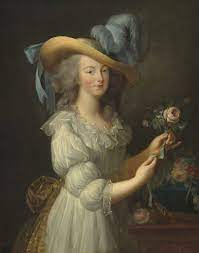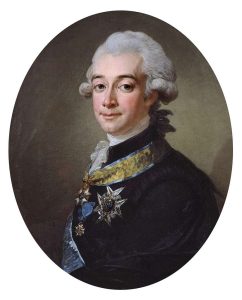Researchers have through X-Ray analyses decoded some letters with redacted writing which had been sent by Marie Antoinette to a Swedish count who has been alleged to be her secret lover.
The analysis of the letters of the last French queen of the ‘ancien regime’ just before the French Revolution in 1789 to the Swedish count revealed the use of words like ‘beloved’ and ‘tender friend’, which showed that their relationship was more than a very close friendship between the nobility.
For more than two hundred years, sentences in the letters which had been redacted and blacked out had made letters between queen Marie Antoinette and the Swedish count Axel von Fersen almost impossible to be read fully. However, X-ray technology has made it possible to read these redacted letters and also helped to reveal the nature of the relationship which the queen had with the Swedish count.

Youtube
The research was carried out by the French National Museum of Natural History. The lead author of the study stated that the parts of the letters which have been redacted are the most intimate ones in the correspondence between the queen and the Swedish count.
The team of experts and specialists used X-ray fluorescence spectroscopy to identify the small differences in the ink in the letter and the ink which had been used by the censor. By this, they were able to mark 45 passages in eight letters which someone had once tried to blackout. These passages included intimate words like ‘madly’, ‘beloved’, ‘adore’, and ‘tender friend’. These findings showed that the rumor that the French queen and the Swedish count had a romantic relationship may have been a credible one.
According to the team of researchers, the people of the time when the letters were written used a lot of flowery language in their writings. However, the team felt that the findings prove that the relationship between Queen Marie Antoinette and Count von Fersen was a romantic one.

Youtube
The research also revealed that the person who censored the letters was none other than Count Fersen himself. The identity of the letters’ censor had for long been unknown to historians. The team of researchers believed that the count decided to redact certain passages of his letters based on the ink used by the censor being the same as the copies which the count made of Marie Antoinette’s letters. The research also found that in one letter, Fersen added a few words above a blacked-out passage. But the added words are of the same kind of ink as was the ink used to redact the passages in the letters. Also, Fersen’s handwriting was certified by a handwriting specialist.
The letters were exchanged between Marie Antoinette and Axel von Fersen for a year between June 1791 and August 1792 as the French Revolution raged in the nation. The queen was under house arrest at Tuileries Palace in Paris with her family while the count was abroad, trying to muster support for the French royal family.
The letters were written on paper made of thick cotton. In them, the queen and count von Fersen discussed the political solution and their personal feelings. On the whole, the blacked-out words do not change the meaning of the letters. Rather, they reveal the affection between Marie Antoinette and Count von Fersen.
However, their romance was a doomed one as the queen was executed by guillotine on October 16, 1793, while the count never married anyone. However, the researchers believe that their relationship was not an unusual one as according to them, it was common for French royals to have had extra-marital romantic affairs.
The relationship was also the reason why the count probably chose to censor the letters as he didn’t want to destroy correspondence that was of sentimental or political value to him, at the same time it would also protect the honor of the two individuals researchers felt. They speculated that the count perhaps would also have wanted to show the letters to foreign courts to build up support for the French queen and her family entrapped by the revolution.
However, though the x-ray technique was used to decipher eight letters, seven others were found too difficult by the research team to interpret as the ink in those letters was very similar for the x-ray to find any differences.
The letters give a view of the mind of the most controversial women in world history. As she awaited her execution, Marie Antoinette spent her days writing to the count. In one letter which she wrote just before she died, she admitted to the count whom she referred to as her ‘dear and loving friend’ that she loved him madly and that she couldn’t but adore him.











